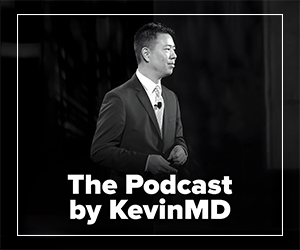An excerpt from Narrative Medicine: New and Selected Essays.
One of my adult daughters recently reminded me of a cherished memory. When she was about four years old, we spent a few hours together at a small, independently owned bookstore. I selected books straight off the shelves and read to her, and later we joined a circle of children and parents to listen to a professional storyteller. Neither of us remembers the titles of the books, but we both recall the joy of discovering easy-to-read stories—kittens and puppies adorning many covers—and the warmth of sharing that experience together.
Now, with a four-year-old daughter of her own and a newborn in tow, my daughter frequents the last remaining indie bookstore in Columbus, Ohio. She often times her visits for when my wife and I are in town, so we can all savor the experience of exploring the store together. The bookstore spans an entire city block and occupies a maze-like series of 32 rooms housed in pre–Civil War buildings—once home to general stores, a saloon, and even a nickelodeon cinema.
I usually leave the store with books in hand and a familiar lament: independent physicians, like independent bookstores, have nearly vanished.
Today, approximately 80 percent of physicians are employed by health systems. Not so long ago, private practice doctors were the backbone of American health care, just as independent bookstores once anchored literary culture. Both were known for their personal touch, their deep community roots, and the autonomy that defined their work. But in the face of corporate consolidation and technological disruption, these once-revered institutions are slowly disappearing.
The rise and fall of private practice physicians
For much of modern medical history, private practice physicians were central to patient care. They weren’t just healers; they were small business owners who hired their own staff, ran their own clinics, and built long-term relationships with patients. They set their own hours, crafted personalized treatment plans, and often served multiple generations of the same family.
But today, most independent doctors have been absorbed into larger health care systems. This shift didn’t happen overnight—it was driven by several interlocking forces:
Financial pressures: Reimbursement rates from insurers have steadily declined, while the costs of operating a practice—liability insurance, electronic health records, regulatory compliance—have soared. Many independent physicians found themselves unable to stay afloat without joining a larger network.
Administrative burden: The bureaucracy of modern health care, from billing codes to prior authorizations, increasingly consumes physicians’ time. Many find they spend more hours on paperwork than with patients. Larger systems offer to offload some of that burden—but often at the cost of professional freedom.
Consolidation of care: Hospital systems and corporate networks have aggressively acquired private practices, offering stability in exchange for salaried employment. But with that stability often comes pressure to meet productivity targets and reduced time for each patient encounter.
What we lose
Patients often describe a sense of comfort in seeing the same doctor for years, even decades. These doctors knew their patients as people, not as time slots or chart entries. Independent bookstores fostered a similar connection—curated collections informed by deep literary knowledge, a spirit of discovery, and the warm hum of a true community hub.
Today, that intimacy is harder to find. Algorithm-driven recommendations have replaced face-to-face conversations with knowledgeable booksellers. And in health care, telemedicine and large system protocols—while sometimes necessary—can’t replicate the kind of relationship-based care once standard in private practices.
The erosion of this “human element” isn’t unique to medicine or publishing. I’m reminded of a moment during the wave of banking consolidations in the 1980s, when a college professor published a book titled The human side of mergers and acquisitions. I congratulated him and joked, “Is there really a human side to mergers and acquisitions—or is your book several hundred blank pages?” He laughed and agreed to write a chapter for a volume I was editing on the future of managed care.
I assigned him the chapter: “Does consolidation in health care mean bigger is better?” His conclusion was nuanced. “Many of the key problems and barriers in health care alliances,” he wrote, “are as much organizational and behavioral as they are strategic and financial.” Even the friendliest mergers, he noted, come with cultural tensions, hidden resentments, and management missteps. Without deliberate attention to the human element, consolidation rarely delivers on its promises.
The path forward
Despite the challenges, there is still hope. In both medicine and bookselling, we’re seeing signs of revival—driven by a growing hunger for personalization, authenticity, and human connection.
Some physicians are turning to concierge or direct primary care models, where patients pay for greater access and more personalized attention, sidestepping insurance complexities. Meanwhile, independent bookstores are adapting by hosting author events, offering coffee and conversation, and cultivating community through thoughtful curation.
Most importantly, people are beginning to recognize the value of what we’re at risk of losing. Patients are rediscovering the importance of continuity in care. Readers are finding joy in wandering physical aisles with loved ones, as three generations of our family continue to do.
Both the private practice doctor and the indie bookseller remind us of something essential: that healing and storytelling are deeply human endeavors. They can’t be fully outsourced, scaled, or digitized without something vital being left behind. In both medicine and literature, it’s not just about outcomes or information—it’s about relationships, presence, and the quiet moments of connection that give life its richest meaning.
Arthur Lazarus is a former Doximity Fellow, a member of the editorial board of the American Association for Physician Leadership, and an adjunct professor of psychiatry at the Lewis Katz School of Medicine at Temple University in Philadelphia, PA. He is the author of several books on narrative medicine, including Narrative Medicine: New and Selected Essays, and Narrative Rx: A Quick Guide to Narrative Medicine for Students, Residents, and Attendings, available as a free download.





















![Collaborative partnerships save rural health care from collapse [PODCAST]](https://kevinmd.com/wp-content/uploads/Design-3-190x100.jpg)
